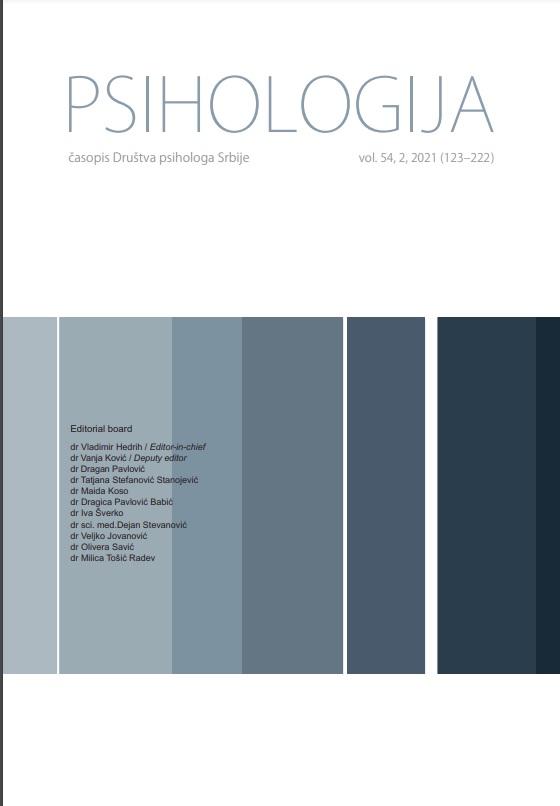The depression anxiety and stress Scales-21: Bifactor statistical indices in support of the total and depression scores
The depression anxiety and stress Scales-21: Bifactor statistical indices in support of the total and depression scores
Author(s): Ljiljana Mihić, Marija Volarov, Milan Oljača, Zdenka NovovićSubject(s): Personality Psychology, Clinical psychology
Published by: Društvo psihologa Srbije
Keywords: bifactor model;clinical assessment;DASS-21R scale;depression;validity;
Summary/Abstract: This study explored several, latent factor models of the Depression Anxiety and Stress Scales–21 (DASS–21) using both a sample of clinically depressed patients and a Facebook sample from Serbia. The DASS–21, the Beck Depression Inventory–II, and the State Trait Anxiety Inventory–Trait were administered to a sample of depressed individuals (N = 296; Mage = 52.21, SDage = 11.56). A Facebook sample (N = 376; Mage =29.12, SD = 8.96) completed the DASS–21 only. A bifactor model with one general distress (G) and two specific factors (Depression and Anxiety) were supported. The three factors had high omega coefficients, whereas omega hierarchical for Depression and Anxiety were low. Based on all evidence from our study, external validation, factor determinacy, and replicability, we concluded that the Serbian version of the DASS–21 assesses reliably general distress and anhedonia in both people with the clinical level of severity of distress and in general population. The Anxiety subscale can be safely used in clinical settings when one wishes to assess individuals presenting with a mixture of distress and anxious arousal. However, until further validation support is provided, we do not recommend use of this scale when the task is to estimate precisely anxious arousal only. The Stress subscale assesses general distress only. Low omega hierarchical coefficients of the Depression and Anxiety subscales could be addressed by reselecting their items from the initial item pool, based on which the DASS–21 was created, using those with substantial loadings on both the G and their respective group factors.
Journal: Psihologija
- Issue Year: 54/2021
- Issue No: 2
- Page Range: 155-172
- Page Count: 18
- Language: English

